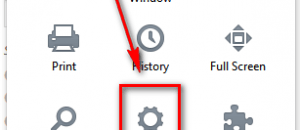Google is rolling out a 1 Gbps broadband network to the citizens of Kansas City (both of them). As the fastest network available to the general public in the United States, and possibly the world, Google Fiber has obviously gained much attention and many headlines. But is it deserved? Will users of Google Fiber really experience 1,000 Mbps download/upload speeds? No, they won’t.
According to a presentation Google did when introducing Google Fiber, the network stood up to its claims of providing blazing fast download and upload speeds:
As you can see in the above image, Google Fiber hit a download speed of 937.99 Mbps and an upload speed of 784.69 Mbps; not exactly 1,000 Mbps but still extremely fast and can be considered to have fulfilled its promise of 1 Gbps speeds. However, the issue at hand isn’t what speed tests show. The issue at hand is if users will actually experience these fast speeds when using Google Fiber on a regular, day-to-day basis.
A few nights ago I was thinking about Google Fiber and how ‘fast’ it is. Then I realized it doesn’t matter how fast Google Fiber is if servers don’t have the capacity to handle the bits. You see how the Internet works is, generally speaking, when you visit a website, stream videos, download/upload content, etc. you make a connection with a server which holds the data you are trying to access. The speed of the connection between you and the server, the rate at which you load a website, stream a video, download a file, etc., is determined by many variables but can be simplified to two things — your connection speed and server’s connection capacity. Google Fiber equips a 1 Gbps connection at your end, yes, but that doesn’t mean the server(s) you are connecting to can handle your bits.
That is not to say servers have slow 5 Mbps connections. Indeed, 1 Gbps connections are nothing new to the web hosting industry and have been around for a while in data centers. The difference here is Google Fiber equips your house with a dedicated 1 Gbps connection which is shared only with people on your local network whereas the server connections are allocated between whoever is trying to access the server at the time. To better explain what I mean, let’s look at a simplified example.
Let’s say you are accessing dotTech. You have Google Fiber’s 1 Gbps and dotTech’s server is equipped with a 1 Gbps connection, too. If you were the only one accessing dotTech you could very well get a 1 Gbps connection between you and dotTech; however, in reality you won’t be the only one accessing dotTech — thousands of others will be visiting at the same time you are and dotTech’s 1 Gbps connection will be split between everyone. Thus even with Google Fiber you may only experience, say, a 10 Mbps connection. There is nothing wrong with Google Fiber per se; it really does install a 1 Gbps connection at your house or place of business. Rather the issue is the Internet isn’t yet ready for such fast connections.
Now the above theory doesn’t hold for all websites. Some websites, such as Youtube, have built-in extra bandwidth capacity to handle high loads. In other words, some websites have better server connections that scale with your Internet speed. However even those have limits (I highly doubt any website in the world will dedicate 1 Gbps to one connection) and scalability will vary from website to website. Similarly, the above will not hold true for P2P connections because of how they operate by connecting to many people as opposed to just one server. Still, though, it is safe to say at this moment in time Google Fiber users will not get to enjoy 1,000 Mbps download/upload speeds, most of the time.
Not living in Kansas City, I cannot provide concrete examples to prove my assertions true. But Max Ross can.
Max Ross, former software developer and current co-owner of a local restaurant, is a citizen of Kansas City who had Google Fiber hooked to his restaurant. As reported on Gizmodo, according to Ross, on average he got 0.8 Mbps with his previous Time Warner Cable connection; now he gets about 14 Mbps with Google Fiber. 14 Mbps is a far shot from 1,000 Mbps but, as I mentioned above and Ross clarifies, Google Fiber connections are throttled by servers; your connection speed is only as fast as the weakest link and in this case the weakest links are the servers.
Of course it isn’t all gloomy for Google Fiber. Having a 1,000 Mbps connection may not necessarily provide super-duper-fast individual connections but it does allow for a better WiFi experience, meaning you no longer have to yell at your younger brother for torrenting downloading while you are watching pron Netflix because Google Fiber has the capacity to support multiple activities at the same time. Simply put, more people can use one Google Fiber connection (via local network) without experiencing a decease in speed versus other broadband connections.
Another plus point of Google Fiber is as the Internet advances and servers upgrade their capacity, users of Google Fiber will enjoy increased connection speeds. For now, however, Google Fiber appears to be ahead of its time.

 Email article
Email article





